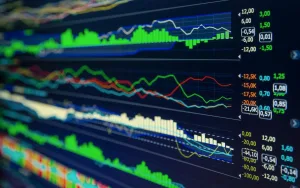In the ever-evolving landscape of global trade and industry, the steel market stands as a barometer of economic health and growth. Understanding the nuances of this complex market requires a keen eye for detail and a deep dive into the factors shaping its trajectory. In this in-depth analysis, we’ll unravel the mysteries of the steel market, providing valuable insights to guide stakeholders, investors, and industry professionals alike.
- Overview of the Steel Market: Before delving into the intricacies of steel market analysis, let’s establish a foundational understanding of this vital industry. Steel, a versatile alloy of iron and carbon, serves as the backbone of modern civilization, with applications ranging from construction and manufacturing to transportation and infrastructure development.
- Key Metrics and Indicators:
- Production and Consumption Trends: Tracking the production and consumption of steel provides valuable insights into supply and demand dynamics. Shifts in these metrics can signal changes in market conditions and forecast future trends.
- Price Fluctuations: Steel prices are influenced by a myriad of factors, including raw material costs, supply chain disruptions, and global economic conditions. Analyzing price trends helps stakeholders anticipate market movements and make informed decisions.
- Trade Patterns: The steel market is inherently global, with trade flows playing a significant role in shaping supply and demand dynamics. Monitoring trade patterns, including imports, exports, and tariffs, provides valuable insights into market trends and competitive dynamics.
- Market Drivers and Trends:
- Economic Growth: The health of the steel market is closely intertwined with broader economic trends. Economic growth, particularly in emerging markets, drives demand for steel products as countries invest in infrastructure development and urbanization.
- Technological Advancements: Innovation in steel manufacturing processes and product development continues to drive industry growth and competitiveness. From advanced materials to sustainable production techniques, technological advancements shape the future of the steel market.
- Environmental Regulations: Increasing emphasis on environmental sustainability is reshaping the steel industry, with regulations driving the adoption of cleaner production methods and recycling initiatives. Understanding regulatory trends is essential for navigating the evolving landscape of environmental compliance.
- Regional Insights and Market Segmentation:
- Asia-Pacific Dominance: The Asia-Pacific region remains the epicenter of the global steel market, accounting for a significant share of production and consumption. China, in particular, plays a pivotal role as both the largest producer and consumer of steel.
- North America and Europe: While mature markets such as North America and Europe exhibit slower growth rates, they remain vital contributors to global steel demand. Market dynamics in these regions are influenced by factors such as infrastructure investments, automotive production, and trade policies.
- Conclusion: In conclusion, navigating the complexities of the steel market requires a multifaceted approach that encompasses economic analysis, technological innovation, and regulatory insights. By staying informed about key metrics, market drivers, and regional dynamics, stakeholders can make strategic decisions to capitalize on opportunities and mitigate risks in this dynamic and essential industry.



